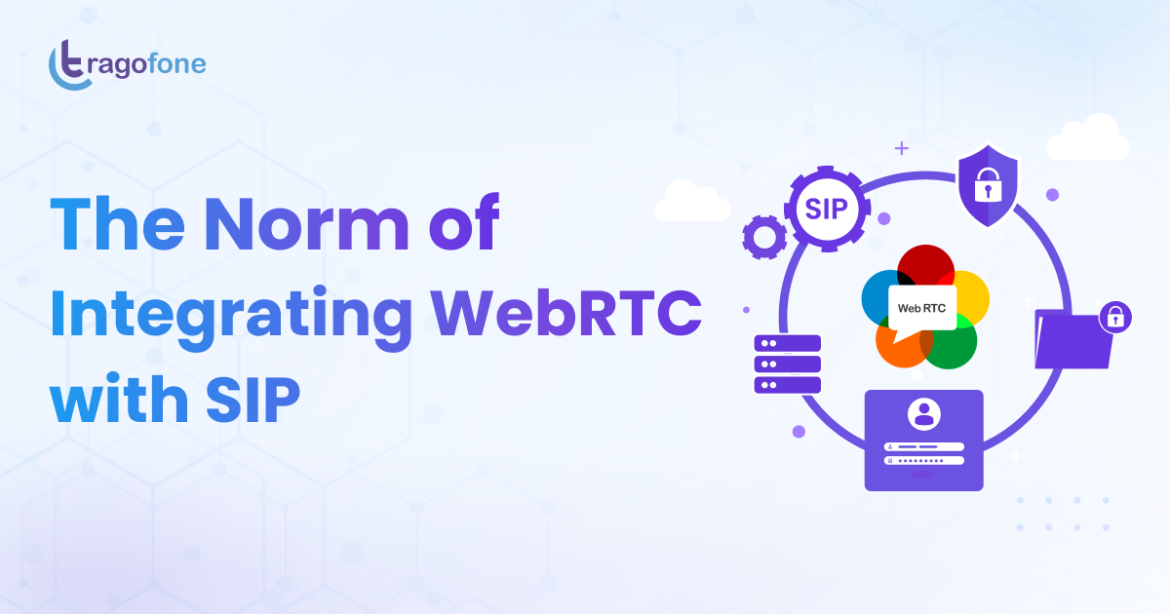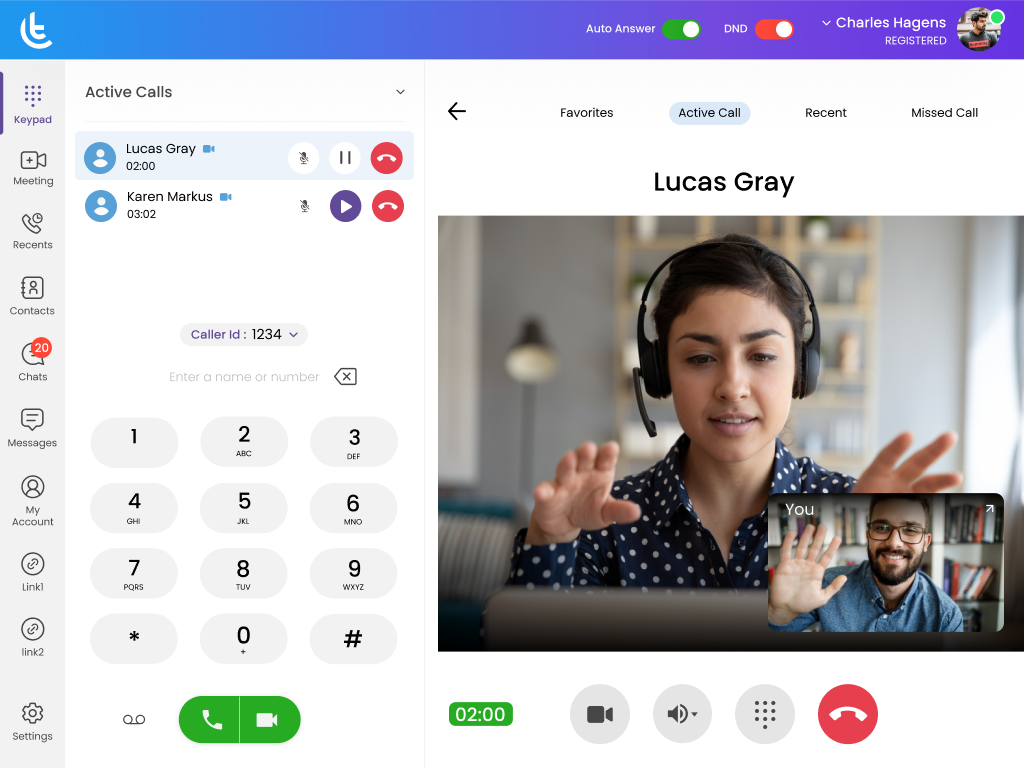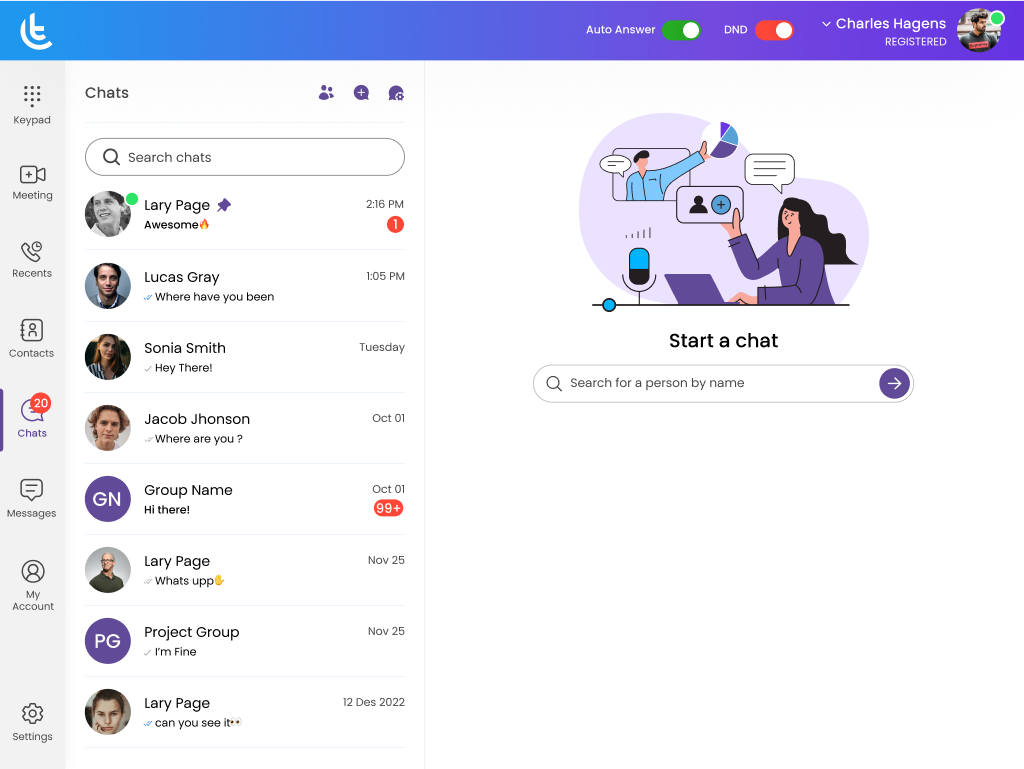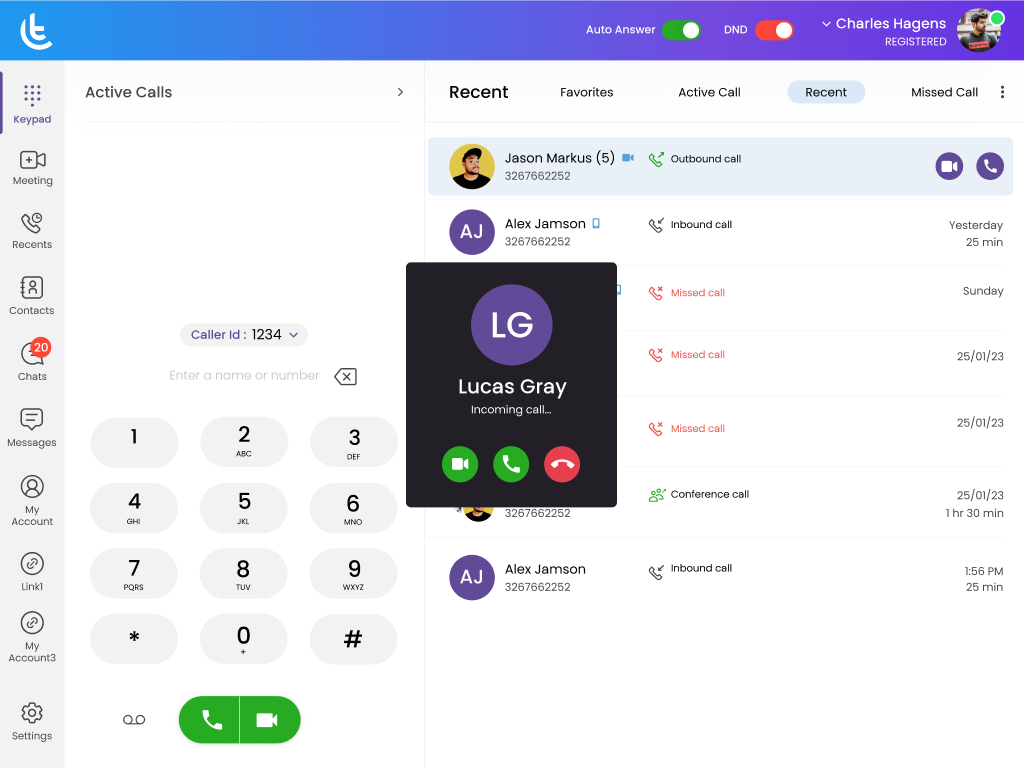
RTC (Real-time communication) plays a significant role in contemporary convergence networks. These days, the most well-liked and commonly utilized IP network services and applications include interactive voice communication, video, conferencing, chat, messaging, and status. Google launched the open-source WebRTC (Web Real-Time Communications) solution in 2011. These services systematically dismantled roadblocks to global communication, positively impacted the way we communicate, and had a wide-ranging impact on every area of our lives. 74% of the new unified communications licenses purchased by businesses will be cloud-based by 2024.
Session initiation protocol (SIP) to web real-time communications (WebRTC) are now the most broadly utilized communication protocols for VoIP-based video and audio conversations. These protocols are extensively used in WebRTC applications for video conferencing and softphones. Each technique has quite diverse functions but are more like siblings than competitors, despite their striking similarities.
WebRTC is a VoIP system that builds on and incorporates SIP functionality, much like SIP. However, the two infrastructures embrace a symbiotic relationship where each supports the other. The cutting-edge technology that has been proposed as a replacement for VoIP’s antiquated systems is SIP to WebRTC calling. They enable the capability for low latency audio and video calls, which makes corporate communication run more smoothly.
In order to understand how to connect WebRTC with SIP, it is important to understand both of these technologies individually and how they function.
What is Session Initiation Protocol (SIP)?
Among the most fundamental communication technologies of the past decade is the Session Initiation Protocol (SIP). SIP introduced brand-new, uniform control techniques. It is a text-based signaling protocol to handle media sessions between two IP-connected endpoints. Due to its widespread use in Voice-over-IP (VoIP) communications, SIP’s capabilities have grown exponentially.
Internet telephony and the transmission of multimedia data between two or more endpoints are the main applications of SIP. For example, a user can start a phone call using SIP with another user or a conference call with several participants.
SIP is neither audio, video, or data; the protocol is not tied to any one form of media. SIP initiates and terminates IP communication sessions, such as collaborative video conferences or voice calls between two users. Sending messages—in the form of data packets—between two or more defined IP endpoints, commonly referred to as SIP addresses, starts a session. Every SIP address is associated with either a hardware SIP client – such as an IP desk phone – or a software client – a softphone.
What is WebRTC, and why is it important?

A VoIP technology that builds on and incorporates SIP features is WebRTC. However, the two infrastructures embrace a symbiotic relationship in which each supports the other. WebRTC makes communication easier by eliminating barriers. This innovative solution works with browsers on both desktop and mobile devices and makes use of plugin-free APIs.
WebRTC is a communications technology that enables users to add real-time media to every web browser, including audio, video, and file transfers. This implies that a softphone does not need to be installed on a user’s PCs, smartphones, tablets, or other devices. Instead, real-time communication capabilities will be available on any device with a web browser. As a result, developers can create cross-platform communication applications without having to work with a slew of technologies or codecs.
Users who want to add real-time audio and video to an existing service can make the most out of WebRTC.
WebRTC makes use of the three key Javascript APIs:
- Media Stream: It gathers audio and video by using the camera and microphone on your device.
- Peer connection: It transmits both audio and video. Enables audio and video peer-to-peer communication. This entails establishing the connection, monitoring it, and cutting it off.
- Data channel: It transmits all kinds of data. Enables the bidirectional flow of data between two peers.
These APIs enable browsers to use and transmit data, audio, and video to other browsers or endpoints.
[vc_row row_width=”” nav_skin=”light” consent_include=”include” el_design=””][vc_column css_animation=””][vc_content_block block=”95586″][/vc_column][/vc_row]
How does calling from SIP to WebRTC function?

Establishing phone calls over the internet has become possible thanks to WebRTC, a relatively new technology. This implies using intermediaries like web browsers or apps to handle the communication rather than directly connecting your devices. This form of call has the advantage of being made using any device, regardless of the technological capabilities of that device.
Making a WebRTC call doesn’t require a high-end smartphone or tablet; in fact, many people prefer doing this on budget smartphones and tablets since they are more accessible.
- The web browser or app of the other party is connected to your device when you place a WebRTC call. Therefore, the other person doesn’t require any complex software to participate in the conversation.
- The WebRTC technology must first be enabled on your device before you can make a phone call using it. To do this, go to your settings and choose “Phone” from the list of available options.
- Once established, you will have access to several features that let you place calls using WebRTC technology. The fact that WebRTC is secure is one of the major benefits of using it to make phone calls.
- This is due to the fact that your calls are routed via a server rather than directly between devices. This indicates that your conversation is private and that unauthorized parties cannot access the information you are disclosing.
You should keep the following in mind when placing a WebRTC call:
- Always exercise caution when connecting to untrusted websites or networks. If you’re not careful, someone else who is connected to this address—you don’t know who—might be able to intercept your message.
- Make sure that your devices are connected to the same network as the other party. This will guarantee that the call can be conducted smoothly.
- Always use a VPN to ensure your security and privacy when utilizing WebRTC for phone conversations. A VPN encrypts all of your traffic to ensure that no one else could intercept or tamper with your communication.
Method of connection for WebRTC & SIP
- WebRTC merely sets up the media and explains its capabilities. Due to this, a method of exchange is still required to start a session. WebRTC is ideal for users who want to add real-time audio and video to an already existing service. But in order to go beyond this function and interact with others, a protocol will still be required. A communication and session-setting protocol, akin to SIP, will be required by WebRTC.
- SIP-compatible devices can communicate with one another directly. SIP servers and SIP endpoints are frequently connected through the use of supplementary middleware (SIP proxy) and different protocols.
SIP capabilities enhanced by WebRTC

Why use WebRTC with SIP? What value does it add that it is supplanting conventional forms of communication in most corporate sectors? Although WebRTC and SIP are independent technologies and can work together, doing so can vastly enhance an organization’s communication channels. The ability to receive incoming calls via the Internet without using the PSTN and a more seamless user experience with one-click audio contextual communication are two of the biggest advantages of integrating SIP into WebRTC. By utilizing a single, well-defined protocol, internet users can connect to legacy PBX hardware in this manner.
The HD audio quality is another perk of using SIP and WebRTC instead of PSTN. Using WebRTC codecs, which are better suited for use over the open internet, results in enhanced audio transmission reliability as well. Almost all contemporary softphones and PBXs, including FreeSWITCH, Asterisk, and others, have this codec fully integrated.
As WebRTC usage increases, VoIP and SIP will become more robust, usable, and versatile as a result. Businesses that use more extensive WebRTC adaptations can give their customers superior web browsing experiences as well as better communication capabilities. Innovative technologies that enable straightforward, direct, and personalized interactions will become increasingly important for getting an edge over the competition as the value of individualized communications and platforms increases among modern consumers.
[vc_row row_width=”” nav_skin=”light” consent_include=”include” el_design=””][vc_column css_animation=””][vc_content_block block=”95596″][/vc_column][/vc_row]
Benefits of SIP to WebRTC calling
When one considers the benefits that SIP and WebRTC bring to users and developers alike, it is simple to understand the frenzy around them. The benefits of SIP to WebRTC calling for business communications include:
- High quality: The quality of media shared using WebRTC VoIP is optimized by low latency.
- Flexibility: Employees do not need to carry extra equipment because this technology is accessible via browsers. It allows you increased mobility and flexibility.
- Cost-effective: WebRTC calls are less expensive than traditional landlines as they are made over the internet.
- Feasible team collaboration: Calls made on WebRTC softphones are not just voice calls. It makes it possible to communicate via video calling and instant messaging. Furthermore, by allowing file sharing, it improves peer-to-peer communication.
- Boosted security: Calling from SIP to WebRTC guarantees security compliance, enhancing the company’s data security.
- Scalability: An organization can scale its business in accordance with its needs when WebRTC is integrated into a VoIP platform like SIP.
- Optimal performance: SIP to WebRTC conversations improve overall performance in real-time communication for enterprises owing to its compatibility with more devices, enhanced security, and reduced latency.
Business perks of SIP to WebRTC
WebRTC is a feasible technological solution for enterprises thanks to its strengths and distinctive characteristics including simple collaboration, minimal latency, and secured multi-user voice and video calls:
- WebRTC can be integrated into mobile apps, websites, and marketing banners that are posted online as adverts. By doing this, more call-in channels are opened up for customers to contact the business.
- WebRTC is simple to incorporate into a company’s website. Once that is completed, users can call the company directly with just a click, whether they need to inquire about sales, support, or customer service. The benefit for an organization is that its customer service representatives can interact with more clients more swiftly and solve more problems.
- WebRTC allows the transmission of relevant information with an organization’s customer support team, for example, customer-specific information. Organizations can learn more about their end consumers thanks to WebRTC. The agents could also receive information about the user’s browsing information when the user places an incoming call. As a result, gathering this information during the call takes less time.
- The workforce of a corporation can attend important meetings online without any barriers with no additional software required. They are able to function more effectively as a result. Furthermore, it saves money since updated software is not required.
- Without the need to install any plugins or applications, SIP to WebRTC makes it possible to invite other parties to web conferences over the internet, whether or not the person’s identity is verified. This minimizes resistance and facilitates effective meetings.
[vc_row row_width=”” nav_skin=”light” consent_include=”include” el_design=””][vc_column css_animation=””][vc_content_block block=”95591″][/vc_column][/vc_row]
Conclusion
SIP and WebRTC are both VoIP technologies since they both aim to transfer voice (and video) across an IP network (using the same standards/codecs) and stand for real-time communications. These technologies, however, more accurately depict the two parts of a unified whole despite their similarities. WebRTC can operate with another protocol or without one at all; it is not necessary to use SIP. Additionally, SIP does not require WebRTC to function; it can do so on its own or in conjunction with other protocols, SIP proxy servers, registrars (who send information to corresponding locations upon request), redirect servers, session border controllers, WebRTC gateways to send voice data between phones after placing calls. Nevertheless, despite their distinct capabilities, both technologies benefit from the integration of the other.
Tragofone offers state-of-the-art SIP to WebRTC softphone to allow seamless team collaboration and streamlined communication. Use its WebRTC VoIP phones to boost your communication system’s efficiency. Additionally, it offers white labeling and auto-provisioning. Get in touch with Tragofone to discover more about SIP to WebRTC calling and avail yourself of a free trial today!